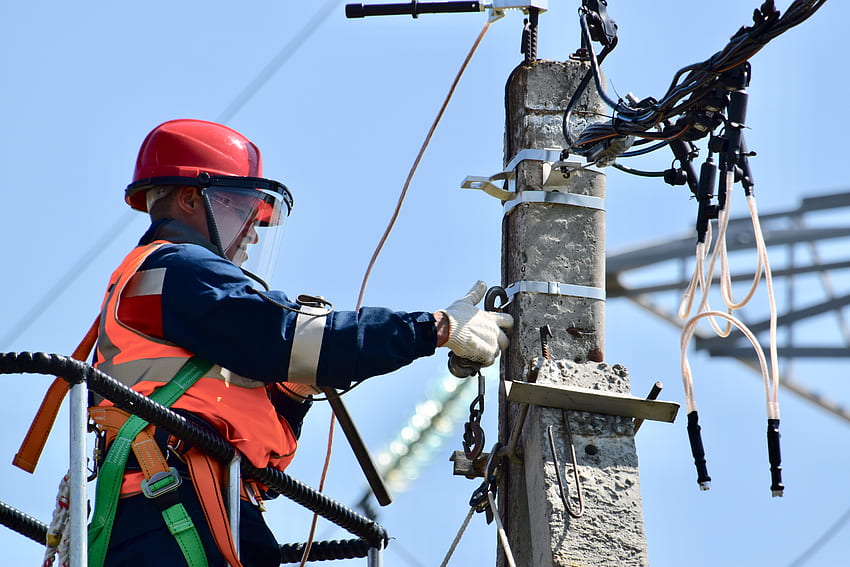
In today’s rapidly evolving world, electricians play a crucial role that often goes unnoticed. They are the unsung heroes keeping our homes, businesses, and infrastructure powered and connected. Yet, the profession is not just about wiring and circuit boards; it encompasses a range of challenges and surprises that few are aware of. From troubleshooting unexpected outages to navigating complex regulations, electricians face a unique set of adventures every day, each with its own set of insights and lessons learned.
As technology advances, so too do the responsibilities and skills required of electricians. This profession is evolving at a pace that can be both exhilarating and daunting. With the rise of renewable energy sources, smart home systems, and the increasing demand for sustainable solutions, electricians are at the forefront of innovation. These professionals are not just fixing problems but are also shaping the future of how we interact with electricity. Join us as we delve into the unexpected and often shocking experiences that define the world of electricians today.
The Day-to-Day Life of an Electrician
The daily routine of an electrician can vary significantly from one job to the next. Mornings often begin with a thorough review of the day’s schedule, which might involve a residential service call, a commercial project, or new installations. Electricians frequently spend time preparing their tools and materials, ensuring they have everything needed to tackle the tasks ahead. This preparation is crucial, as it can make the difference between a smooth day and one filled with frustrations caused by forgetting essential equipment.
Once on-site, an electrician’s tasks can include troubleshooting electrical problems, installing wiring, and adhering to safety codes. They must interpret blueprints and technical diagrams while working in diverse environments, from homes and offices to industrial sites. The work often requires physical stamina, as they might be climbing ladders, crawling through tight spaces, or maneuvering heavy equipment, all while maintaining focus on safety measures and best practices.
In addition to technical skills, electricians must also maintain strong communication with clients and team members. They explain the scope of work, address concerns, and provide updates on project timelines. Customer service is a significant aspect of the job, as it helps build trust and ensures that clients feel informed throughout the process. Each day presents unique challenges and opportunities for electricians, making their work both dynamic and rewarding.
Butler Electrician Nj
Common Myths About Electricians
One common myth about electricians is that all they do is install and repair wiring. While this is a significant part of their job, electricians are also involved in a variety of tasks that include troubleshooting electrical systems, ensuring safety compliance, and upgrading outdated electrical systems. They work with complex tools and equipment, and their expertise extends to understanding electrical codes and regulations, which ensures that all work is performed safely and effectively.
Another misconception is that becoming an electrician requires only basic training. In reality, electricians undergo extensive training that includes a combination of classroom education and hands-on apprenticeships. This comprehensive training is crucial for electricians to develop the skills necessary to handle a range of electrical systems and to stay updated with the latest technologies. Their knowledge and experience allow them to tackle unique challenges in diverse environments, from residential homes to commercial buildings.
Many people believe that electricians only work during regular business hours. In truth, electricians often have to respond to emergency situations at all hours of the day and night. Electrical issues can arise unexpectedly, and when they do, electricians must be available to address them quickly. This availability adds to the demand for skilled professionals in the field, making it a crucial aspect of their work that is often overlooked.
Shocking Safety Protocols
Safety is the top priority for electricians working in potentially hazardous environments. The first vital protocol involves the use of personal protective equipment, commonly known as PPE. Electricians must wear insulated gloves, helmets, and safety glasses to protect themselves from electrical shocks and falling debris. These measures help mitigate risks associated with live wires and high-voltage equipment, enabling electricians to perform their duties with greater security.
Another essential aspect of safety protocols is the implementation of lockout/tagout procedures. This practice ensures that all electrical sources are properly de-energized and locked out before maintenance or repair work begins. By using tags on power sources, electricians can clearly communicate that these currents must not be activated. This step not only protects the worker performing maintenance but also safeguards everyone in the vicinity.
Lastly, constant training and awareness are crucial components of an electrician’s safety program. Regular workshops and drills help reinforce knowledge of safe practices and keep electricians updated on the latest technologies and regulations. By fostering a culture of safety and encouraging open discussions about risks, electricians can minimize hazards and promote a proactive approach to their work environment.
Innovations in Electrical Tools
The field of electrical work is constantly evolving, and with it comes a wave of innovative tools designed to enhance efficiency and safety for electricians. One significant advancement is the development of smart multimeters that not only measure voltage, current, and resistance, but also connect to smartphones and tablets via Bluetooth. This connectivity allows electricians to record their measurements in real time, share data with colleagues, and even access troubleshooting guides, making the job smoother and faster than ever before.
Another area of innovation is in cable management tools. Electricians now have access to advanced cable pullers and organizers that reduce the physical strain associated with running large amounts of wiring. These tools are designed to streamline the installation process, ensuring that cables are arranged neatly and safely, minimizing the risk of damage or accidents. With improvements in ergonomic design and materials, electricians can work longer hours without fatigue while maintaining high standards of work.
Additionally, there has been a surge in the use of augmented reality (AR) and virtual reality (VR) technologies in training and day-to-day operations. Electricians can now use AR glasses that overlay essential information and schematics right on the job site, allowing them to visualize complex systems more easily. VR, on the other hand, provides a realistic training environment where new electricians can practice their skills without the risks associated with on-the-job training. These innovations not only improve productivity but also enhance safety and training for future generations of electricians.
Real-Life Electrical Incidents
Electricians often encounter situations that highlight the potential dangers associated with electrical work. One such incident involved a technician responding to a routine service call for faulty wiring. Upon inspection, they discovered that the insulation around the wires had deteriorated due to age, causing live wires to be exposed. This immediate hazard could have led to severe shocks or even a fire, reinforcing the importance of regular maintenance and timely repairs.
Another alarming event occurred when an electrician was working on an older home. While replacing a circuit breaker, they inadvertently touched a live terminal, resulting in a nasty electrical shock. Fortunately, the technician was trained in safety protocols and quickly disconnected the power. This incident serves as a reminder of the necessity of adhering to safety guidelines and underscores the risks electricians face daily.
Moreover, a different case involved an electrician who was called to fix a recurring power outage in a commercial building. After thorough investigation, he discovered a rodent had chewed through the electrical wires in the attic, creating a significant fire hazard. This discovery not only highlighted the unpredictable challenges electricians deal with but also showcased their critical role in ensuring the safety and functionality of electrical systems in various environments.
















